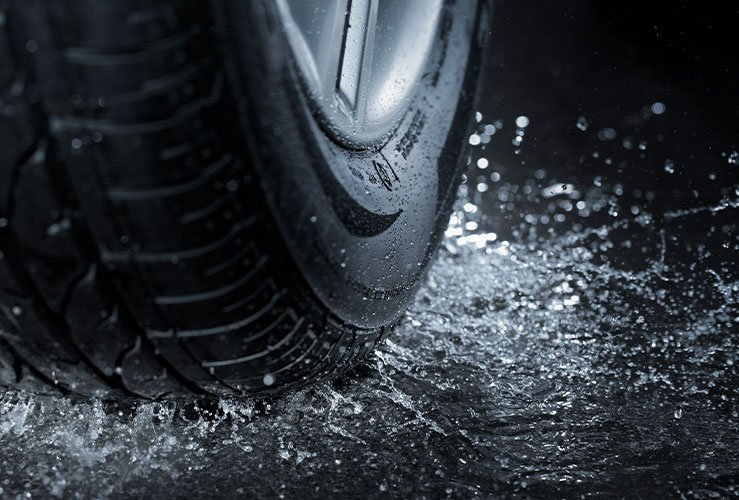Ever wondered how to read a tyre code? Every tyre features a tyre code - a string of letters, words and symbols embossed on the tyre's sidewall. It tells you the range, size and specific characteristics of a given tyre, namely: sidewall height; width; aspect ratio; construction type; load index; and speed rating.

Here we provide an example tyre code to help explain what each component means:
205 - the width of the tyre section in millimetres.
55 - the aspect ratio expressed as a percentage - the sidewall height divided by the tyre's width.
R - this is the tyre's construction type - these days most tyres are 'radial' denoted by an 'R'.
82 - This is the load index, which tells you the maximum load the tyre can take when inflated to the maximum safe pressure.
H - this is the speed rating - it's the maximum speed at which the tyre can carry a load. These ratings range from A, the lowest, to Y, the highest. However, 'H' - shown here - is rated between U and V.
Speed symbol | Maximum speed km/h |
mph |
N | 140 | 87 |
P | 150 | 93 |
Q | 160 | 99 |
R | 170 | 106 |
S | 180 | 112 |
T | 190 | 118 |
H | 210 | 130 |
V | 240 | 149 |
W | 270 | 168 |
Y | 300 | 186 |
ZR | 240 | 149 |
Li | kg | Li | kg |
65 | 290 | 94 | 670 |
66 | 300 | 95 | 690 |
67 | 307 | 96 | 710 |
68 | 315 | 97 | 730 |
69 | 325 | 98 | 750 |
70 | 335 | 99 | 775 |
71 | 345 | 100 | 800 |
72 | 355 | 101 | 825 |
73 | 365 | 102 | 850 |
74 | 375 | 103 | 875 |
75 | 387 | 104 | 900 |
76 | 400 | 105 | 925 |
77 | 412 | 106 | 950 |
78 | 425 | 107 | 975 |
79 | 237 | 108 | 1000 |
80 | 450 | 110 | 1030 |
81 | 462 | 110 | 1060 |
82 | 475 | 111 | 1100 |
83 | 487 | 112 | 1120 |
84 | 500 | 113 | 1150 |
85 | 515 | 114 | 1180 |
86 | 530 | 115 | 1215 |
87 | 545 | 116 | 1250 |
88 | 560 | 117 | 1285 |
89 | 580 | 118 | 1320 |
90 | 600 | 119 | 1360 |
91 | 615 |
|
|
92 | 630 |
|
|
93 | 650 |
|
|
This stands for ‘Uniform Tire Quality Grading’ and it's a US standard. Since most tyres are also sold in the USA, British and European tyres also feature a UTQG code.
However, you won't find a UTQG code on 4x4 tyres, snow tyres, emergency spare wheels or tyres of 12 inches or under.
Your tyres also feature manufacturing information. Here is an example:
DOT BPM2 P711 1218
DOT - Department of Transportation (America)
BP - relates to the plant that made the tyre
M2 - Dimension code
P711 - Additional/optional code
1218 - Week and year of manufacture (In this case week 12 of 2018)
Note: the year of manufacture may instead be denoted by a three digit code. 129, for example, would mean the tyre was made in the 12th month of 1999.
3PMSF - a symbol with three peaks and snowflake
This stands for ‘3 Peaks Mountain Snow Flake’ and has been tested on snow-covered roads. If the markings also appear with M+S, the tyre is able to handle challenging snow conditions.
M+S
This means the tyre is a "mud and snow" tyre under European regulations. However, it will not have been tested for winter performance.




